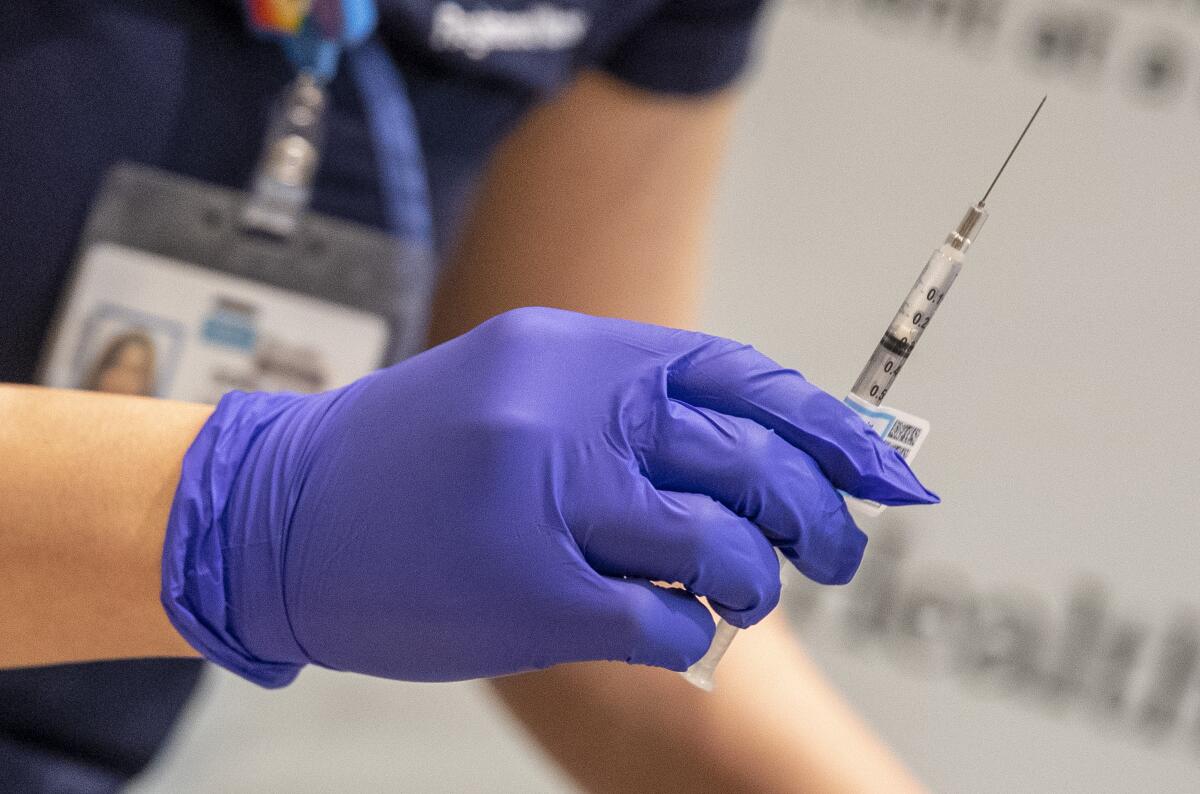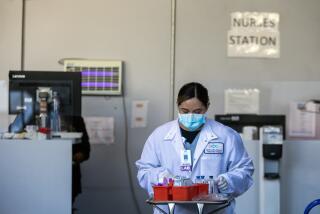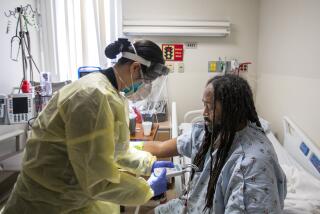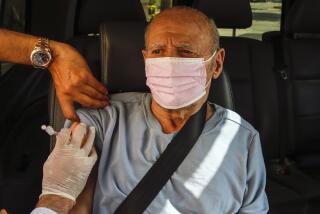A hospital gave a COVID-19 vaccine to a Disney employee. It may be permitted under state guidance

Nearly as soon as the COVID-19 vaccine was made available in California, accounts started emerging of people skipping the priority line ahead of frontline workers and long-term care residents.
Most recently, a 33-year-old Disney employee revealed on Facebook that she received the Pfizer-BioNTech vaccine through a relative with connections to Redlands Community Hospital.
Even though state officials have warned that jumping ahead could lead to sanctions, the state guidance allows for exceptions, and it appears that some people are aggressively taking advantage of it.
Officials at Redlands Hospital confirmed that it administered the vaccine to several non-frontline workers, but only because extra doses were left over after frontline workers had received the vaccine, they said.
According to the California Department of Public Health, such a scenario could be allowed.
Under state guidelines released this month, health departments and facilities may offer vaccine doses to people in lower priority groups when demand eases and doses are about to expire.
“Health Departments may temporarily adjust prioritization based on other resource constraints while continuing efforts to immunize higher priority groups as soon as feasible,” the guidelines state.
The flexible guideline illustrates the quickly evolving factors that influence how the vaccine is distributed. The state rules have been ambiguous on what happens when a hospital ends up with additional vaccine doses in the event that every frontline worker willing and able to receive the vaccine has done so.
State officials have warned that people are not allowed to cut in front of priority-level recipients.
“I just want to make this crystal clear: If you skip the line or you intend to skip the line, you will be sanctioned, you will lose your license,” Gov. Gavin Newsom said Monday, putting the onus on medical workers. “We will be very aggressive here.”
The guideline was changed after it appeared that some hospitals would be receiving extra doses in the vials.
Each vial contains five to six vaccine doses. Once a vial is opened, its shelf life is about six hours.
“It’s truly a use-it-or-lose-it situation. You can’t just keep it for tomorrow morning’s shift,” said Andrew Noymer, UC Irvine associate professor of public health.
Still, Noymer said that in order for several doses to be left unused, several vials would have to be prematurely opened.
“If you don’t have the doses, don’t reconstitute the vial,” he said, noting that if five vials offered about 25 doses, it may be normal for roughly four to be left over, but that every effort should be taken to get people vaccinated within the hospital setting.
“It really raises the question of whether everyone on duty at the time already got theirs,” including the pharmacist, the person who greets people once they enter the building or custodial staff, he said.
The Disney employee shared her story on Facebook last week but has since removed it, the Orange County Register reported over the weekend. The newspaper did not identify the woman, but the hospital confirmed that it did provide vaccine doses to several non-frontline workers.
“Redlands Community Hospital administered its allotment of Pfizer vaccines to its frontline physicians, healthcare workers and support staff per CDPH Guidelines. After physicians and staff who expressed interest in the vaccine were administered, there were several doses left. Because the reconstituted Pfizer vaccine must be used within hours or be disposed of, several doses were administered to non-frontline healthcare workers so that valuable vaccine would not be thrown away,” marketing manager Nikyah Thomas-Pfeiffer said Monday.
Thomas-Pfeiffer said that all staff, including janitors and technicians, had been given access to the vaccine. It was not immediately clear how many doses the hospital received and how many people are on staff.
The vaccination guidelines will be updated again this week. Newsom and Dr. Mark Ghaly, California’s health and human services secretary, on Monday indicated that they would be focused on how prioritization will be enforced. The prioritization list is expected to be updated as early as Wednesday.
More to Read
Sign up for Essential California
The most important California stories and recommendations in your inbox every morning.
You may occasionally receive promotional content from the Los Angeles Times.











